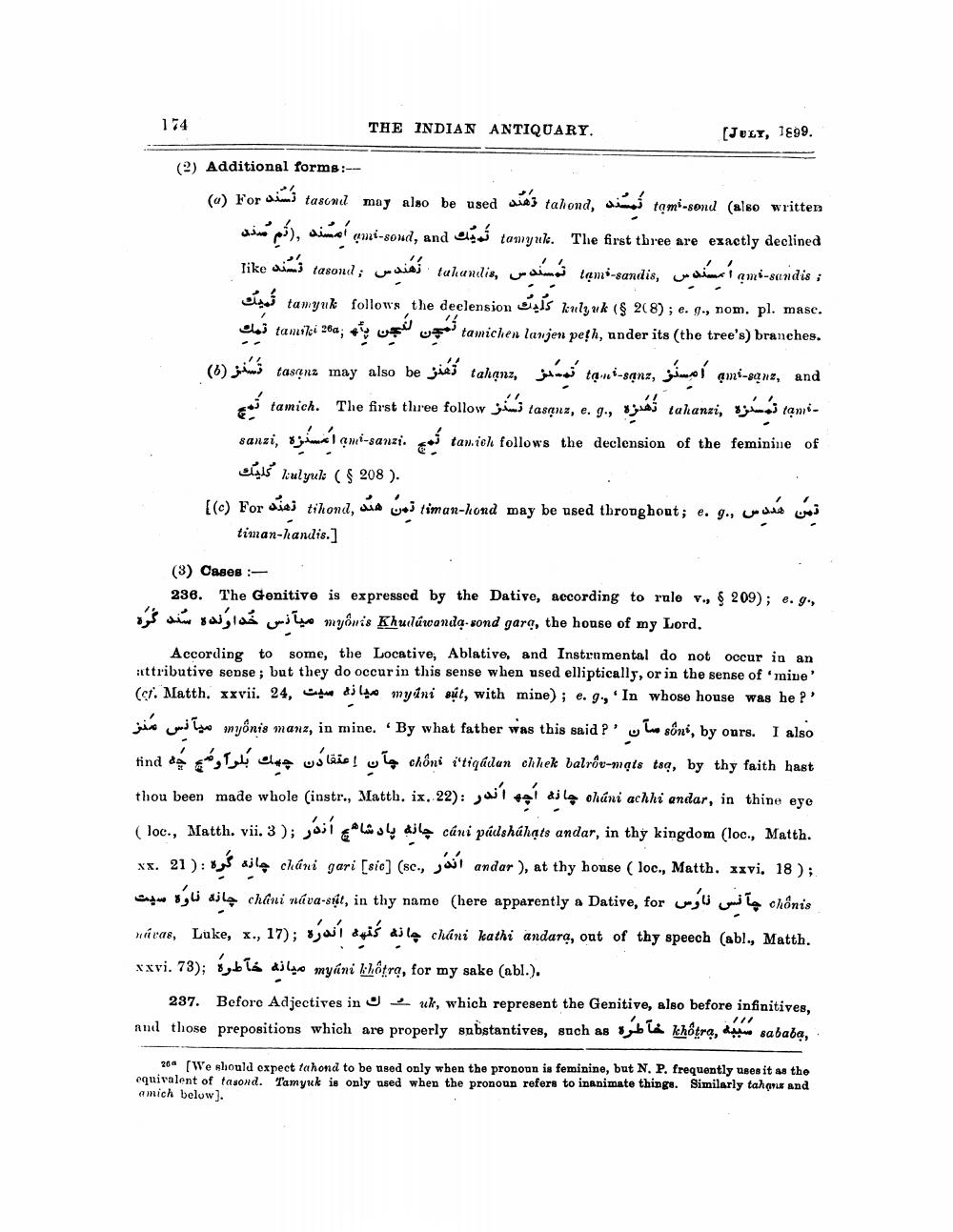________________
174
THE INDIAN ANTIQUARY.
[JULY, 1999.
(2) Additional forms:--- (a) For shim'tasonu may also be used wiás tahond, almost tami-sond (also written
el ami-soud, and is tomyule. The first three are exactly declined like cim's tasond; waliás tahandis, wasima tami-sandis, wariani ami-sandis ; osas tamyuk follows the declension oisis kulguk (§ 208); e. 9., nom. pl. masc. eto tamiki zod, og wire wood tamichen lanjen pegh, under its (the tree's) branches.
take منز taste may also be تنز (6)
نمدز - ي امستر ,ti-sans gens, and
for tamich. The first three follow sú tasạns, e. 9., sjás taransi, színes tamisanzi, sjímá qmi-sanzi. coś tanich follows the declension of the feminine of
casts biulyuk ( $ 208 ). [(e) For síoj tihond, sia un timan-hond may be used throughout; e. go, cuand was
timan-kandis.]
(3) Cases :
236. The Genitive is expressed by the Dative, according to rule v., $ 209); e.g., das sie saglaá comitymo myênis Khu lúwanda-sond gara, the house of my Lord.
According to some, the Locative, Ablative, and Instrumental do not occur in an attributive sense; but they do occur in this sense when used elliptically, or in the sense of mive' (ct. Matth. xxvii. 24, dj to myini sýt, with mine); e. 9, 'In whose house was he?' ja Joni Taw myênis manz, in mine. “By what father was this said ?' Joy To sóné, by onrs. I also
چه find
chana taqadan onek balree-mats taq, by thy faith hast چان إعتقا دن چهك برا و
thou been made whole (instr., Matth. ix. 22): your car ajlą cháni achhi andar, in thine eye (loc., Matth. vii. 3 ); jásí como su dilə cáni pálsháhạts andar, in thy kingdom (loc., Matth.
cháni gari [sic] (sc., javi andar ), at thy house (loc., Matth. xxvi. 18);
چانه ناوه سيت
chantis چانس نارس hani dua-st, in thy namo (here apparently a Dative, for
náras, Luke, x., 17); 3 jou duis ajlą cháni kathi andara, out of thy speech (abl., Matth. xxvi. 73); 6ybłá djlo myáni khôtra, for my sake (abl.).
237. Before Adjectives in J u k, which represent the Genitive, also before infinitives, and those prepositions which are properly substantives, such as sub ta khôtra, depine sababa,
200 (We should expect tahond to be used only when the pronoun is feminine, but N. P. frequently uses it as the equivalent of tasond. Tamynck is only used when the pronoun refers to inanimate things. Similarly tahorus and amich below).




